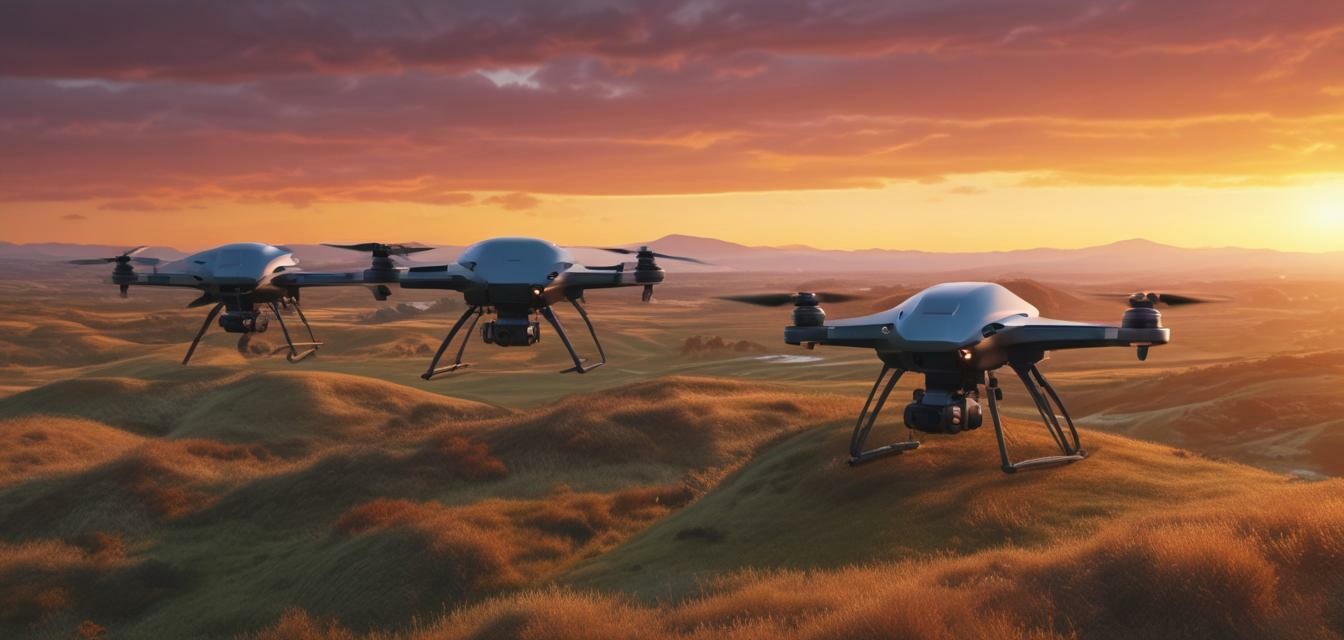
Key Developments in Drone Technology for 2024
Key Takeaways
- Advancements in camera technology enhance aerial photography and videography.
- New regulations make it easier for consumers to fly drones without complicated registrations.
- Battery technology improvements extend flight times significantly.
- Features like obstacle sensing and automated flying modes increase safety and ease of use.
- Consumer drones now offer diverse applications ranging from photography, home delivery, to surveying.
Drones have undergone significant transformations in recent years, but as we move into 2024, exciting advancements are set to redefine the industry landscape. From enhanced flight capabilities to improved safety features and regulatory changes, the future of drone technology looks promising. In this article, we'll explore some of the key developments shaping this year's industry movements and consumer options.
Advancements in Camera Technology
As drone usage continues to grow, so does the demand for high-quality aerial footage. In 2024, major advancements in camera technology have been a game changer for enthusiasts and professionals alike.
- 4K and Beyond: Many new drones now shoot in 4K HDR, providing stunning clarity and vibrant colors. This advancement is especially seen in models like the DJI Mini 3, which captures crystal-clear aerial shots.
- Vertical Shooting: Drones such as the DJI Mini 4 Pro allow users to shoot vertical videos, perfect for social media sharing.
- Improved Stabilization: Enhanced gimbal systems ensure smooth and stable footage even in turbulent conditions.
Battery Life and Efficiency Improvements
Longer battery life is essential for any drone user, as it enables extended flight times and more opportunities for capturing content. In 2024, battery technology has made notable advancements:
- Extended Flight Times: Drones like the DJI Mini 2 SE boast a maximum flight time of 31 minutes, allowing users to explore and film longer.
- Smart Battery Management: Many drones now feature intelligent battery systems that optimize power consumption, extending usability even further.
- Modular Battery Systems: New models often support interchangeable battery systems, allowing users to easily switch out batteries in the field.
Enhanced Safety Features
Safety continues to be a priority in drone technology, with more models incorporating advanced safety features:
- Obstacle Sensing: Drones like the DJI Avata 2 come equipped with omnidirectional obstacle sensing, enhancing flight safety by avoiding collisions.
- Automated Flight Modes: With features like ActiveTrack, drones can automatically follow subjects, allowing users to focus on creativity without the stress of piloting.
- Regulation Friendly: Many new drone models are lightweight (under 249g), eliminating the need for registration and easing the path for newcomers.
Innovations in Drone Design
Modern drones are not just about function; design innovations have also propelled the consumer experience:
| Drone Model | Weight | Camera | Flight Time | Max Transmission Distance |
|---|---|---|---|---|
| DJI Mini 3 | Under 249g | 4K HDR | 38 minutes | 10km |
| DJI Mini 4 Pro | Under 249g | 4K/60fps | 34 minutes | 20km |
| DJI Mini 2 SE | Under 249g | 2.7K | 31 minutes | 10km |
| DJI Avata 2 | 377g | 4K | Varies (3 batteries included) | 155° FOV |
Applications and Future Trends
As drone technology progresses, so do the applications for these versatile devices:
- Aerial Photography: The demand for high-quality visuals continues to rise, with drones becoming staples in professional photography and cinematography — especially with the advancements in camera capabilities.
- Delivery and Logistics: Companies are beginning to explore drone delivery, which could revolutionize the shipping industry in the coming years.
- Agricultural Uses: Farmers are utilizing drones for crop monitoring, mapping, and precision agriculture, helping to optimize yields and reduce wasted resources.
- Surveying and Mapping: Drones are increasingly used in surveying, enabling quick and efficient mapping of land for various industries.
Tips for Choosing the Right Drone
- Determine your primary use: photography, racing, or farming.
- Consider your skill level — beginners may want simpler models.
- Check battery life and flight times to ensure it meets your needs.
- Look for safety features like obstacle avoidance and return-to-home functions.
- Read reviews to gauge user satisfaction and product reliability.
Conclusion
As we head further into 2024, the drone industry is evolving rapidly with exciting new technologies and features. From enhanced camera capabilities to advanced safety features and increased flight times, new drones cater to both enthusiasts and professionals alike. Staying informed about these advancements will help users make the best choices for their needs. For more insights, check out our latest articles on News and Trends in the electronics gadgets industry.
